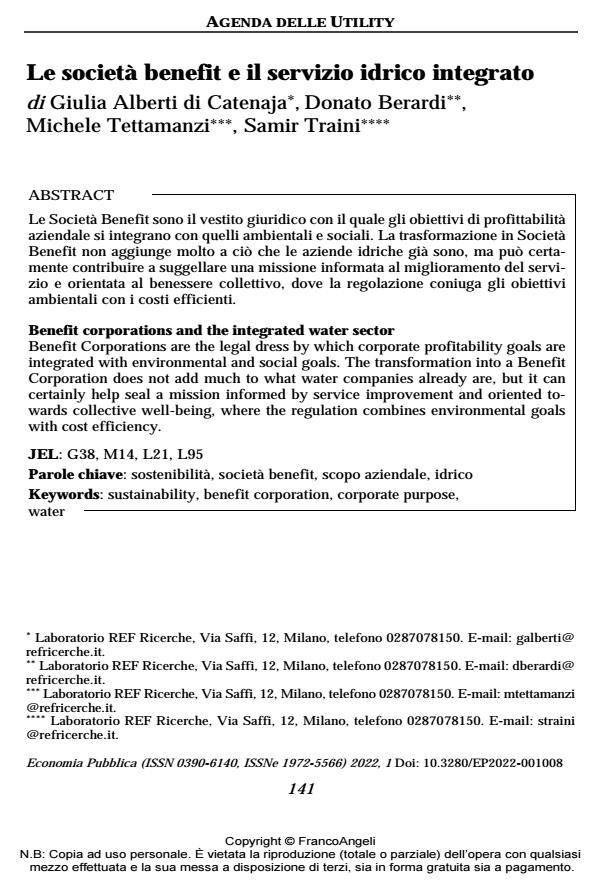Benefit corporations and the integrated water sector
Journal title ECONOMIA PUBBLICA
Author/s Giulia Alberti di Catenaja, Donato Berardi, Michele Tettamanzi, Samir Traini
Publishing Year 2022 Issue 2022/1
Language Italian Pages 26 P. 141-166 File size 244 KB
DOI 10.3280/EP2022-001008
DOI is like a bar code for intellectual property: to have more infomation
click here
Below, you can see the article first page
If you want to buy this article in PDF format, you can do it, following the instructions to buy download credits

FrancoAngeli is member of Publishers International Linking Association, Inc (PILA), a not-for-profit association which run the CrossRef service enabling links to and from online scholarly content.
Benefit Corporations are the legal dress by which corporate profitability goals are integrated with environmental and social goals. The transformation into a Bene-fit Corporation does not add much to what water companies already are, but it can certainly help seal a mission informed by service improvement and oriented towards collective well-being, where the regulation combines environmental goals with cost efficiency.
Keywords: sustainability, benefit corporation, corporate purpose, water
Jel codes: G38, M14, L21, L95
Giulia Alberti di Catenaja, Donato Berardi, Michele Tettamanzi, Samir Traini, Le società benefit e il servizio idrico integrato in "ECONOMIA PUBBLICA " 1/2022, pp 141-166, DOI: 10.3280/EP2022-001008